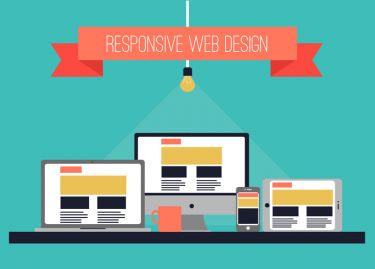 Let’s just take a moment and reflect. Do you use a mobile device to view online content? Chances are, yes. Now, do you ever look at a company’s website on your cell phone? According to statistics, your answer will be yes. Are you reading this on a mobile phone? Chances again are yes. Now, should your website be designed and functioning for mobile? This can be answered with three letters, YES!
Let’s just take a moment and reflect. Do you use a mobile device to view online content? Chances are, yes. Now, do you ever look at a company’s website on your cell phone? According to statistics, your answer will be yes. Are you reading this on a mobile phone? Chances again are yes. Now, should your website be designed and functioning for mobile? This can be answered with three letters, YES!
Below, we will talk a little about the different ways a website can be designed for mobile (Responsive & Dynamic Serving) and why mobile has changed from an option to a prerequisite to your business’ success.
Responsive vs. Dynamic Serving
Dynamic serving is when a website checks the user’s device and shows a separate page for that device. Using this option means you will need to design 2-5+ different websites. You will spend more money, time, and resources having two different websites. The second option is responsive. Responsive web design is the answer to all of our problems.
How? The answer is simple. Using responsive means you only need to design, build, and update one website, and the savings are substantial. Instead of spending money on 2-5 different websites, you now can spend that money on something else your company needs. With a responsive website, you can rest assured that anyone, on any device, can view your website properly. Google is now also penalizing websites that are not optimized for mobile, which will hurt your search engine optimization (SEO) goals and move your page deeper into the abyss of websites on Google.
Why Use RWD?
1. Usage of mobile has increased
Walk into a waiting room and see how many people are on a mobile device. You will find most, if not all of them engaging in this growing phenomenon. This is not the only place us humans are using our smartphones. At home sitting on the couch, in classrooms, waiting rooms, in the car, etc. So much so, that only 10.6% of users identify as desktop-only users, and mobile-only users have climbed to 10.6 percent. Therefore, 78% of the digital population is cross-platform, using desktop and mobile. When 87% of users are using a platform, it is something to be taken serious and not blown off.
2. Better User Experience
Have you ever been on a website where you had to zoom in and out to view the text? Users hate this, and it is a huge reason for high bounce rates. According to Google's Think Insights on Mobile, whenever someone arrives on your mobile website and is frustrated, there's a 61 percent chance they will leave and go to another website. However, whenever a user has had a positive experience with your mobile website, that person will be 67 percent more likely to do what you are asking them to do. Moreover, 48 percent of users stated to Google that when a site doesn't function on their mobile device it makes them feel that the company does not care for their business.
3. Google Says So
Google has put it out there that more than half of all Google Searches come from a mobile device. The search engine giant recommends using none other than a responsive design for all of your websites. Listening to the biggest search engine’s tips is a no-brainer.
4. Cross-Device Experience
While checking out your page, users aren’t just using one device anymore. One may begin their journey on a mobile, then return later on desktop to finish where they left off or complete a contact form. Users want the same look and feel no matter what device they are on. With a responsive website, you are guaranteed that your customers will get a consistent experience.
5. Long-Term Use
Responsive design caters to all browsers, all devices, and anything that your clients can throw at you. When the next iPhone comes out, millions of users will switch, and your website will have to also. The specifications for your website today are good for today only and will change with every new screen size, product change and browser. If, and when, technology changes, your website will become antiquated. The only answer? A responsive website.




